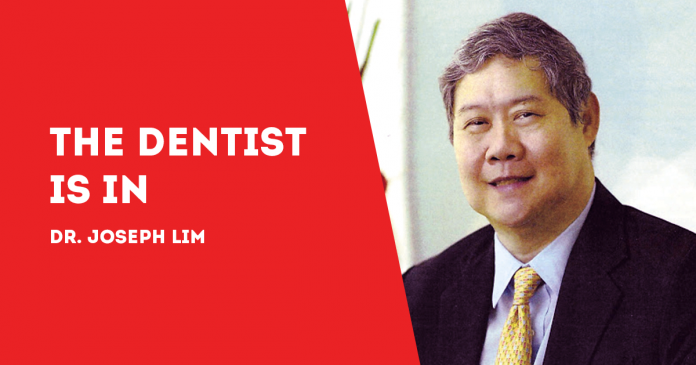
(By Dr. Joseph D. Lim and Dr. Kenneth Lester Lim, BS-MMG, DDM, MSc-OI)
BRUSHDJ, MyDentist, Text2floss, MyFitStrip, and ToothSavers.
These are apps that provide information about oral health. And it engages people to follow oral hygiene habits at the same time.
And so it is that TikTok, Facebook, Twitter and social media play significant roles in oral health care.
In this time and age when social media is almost everywhere, their role is very important in the lives of almost half the world’s populations, the number affected by oral health issues.
It is estimated that oral diseases affect nearly 3.5 billion people. Indeed, untreated dental caries (tooth decay) in permanent teeth is the most common health condition, according to the Global Burden of Disease report.
The problem goes way beyond the mouth as it impacts on the quality of life itself. It’s simple: when one has poor teeth, one cannot eat well and may suffer from malnutrition. Or one cannot smile that much and tends to avoid social gatherings. In fact, toothaches are most often cited as the reason for being absent from school or work.
Not only that. It affects people throughout their lifetime. Poor oral health is one of the risk factors for many diseases like coronary artery disease, cancer, and diabetes.
It’s an enormous social and economic burden, so much so that information about oral health is one of the most affordable and cost-effective ways to reduce the burden, according to a study published in cureus.com.
The study was led by Dr. Shristy Sharma, a Public Health Dentist at the Maulana Azad Institute of Dental Sciences, in New Delhi, India.
The study searched a vast amount of scientific literature published on PubMed, as well as Cochrane Library articles, Google Scholar, World Health Organization guidelines on the digital promotion of oral health, and many other internet sources.
The study zeroed in on seven randomized clinical trials, one quasi-experimental trial, one non-randomized trial, and three systematic studies conducted in Brazil, India, Iran, Italy, Nigeria, Syria, The Netherland, London, and Sydney.
Dr. Sharma points to the role of digital media. Three in four American adults use social media; of these, three-quarters engage in social media at least once a day. Nearly half of them say that information found via social media affects the way they deal with their health.
In China, more than 740 million individuals or more than half of the population have social media accounts. More than seven in 10 of WeChat’s 570 million users say it is their primary source of health education. (WeChat is a Chinese messaging, social media, and mobile payment app.)
Digital media are are an alternative platform that can aid in reaching out to the wider population where oral health delivery services are limited, the study observes.
It says that only three in 10 people in poor countries have access to oral health care services; in rich countries, eight in 10 have access to dental attention.
Dr. Sharma believes that digital media can enhance oral health literacy. “Interactive digital interventions have been shown to increase knowledge of oral health and modify oral health behavior, which is one of the prime approaches to reducing the oral health burden.”
The impact of digital media is very strong and that benefit can be utilized to create positive reinforcement in the population about their oral health regardless of their age, she continues.
“The revolutionary development of digital media in day-to-day life and its reach to the community is the window of opportunity for influencing oral health behaviors through oral health education, social marketing, and oral health promotion interventions.
“It has enhanced information sharing across the world, giving people much greater access to facts, figures, and statistics, allowing that information to circulate much faster.”
“As far as developing nations like India are concerned, this technology can help in achieving our goals of Universal Health Coverage in the most economical way possible,” Dr. Sharma concludes.
***
Dr. Joseph D. Lim, Ed. D., is the former Associate Dean of the College of Dentistry, University of the East; former Dean, College of Dentistry, National University; Past President and Honorary Fellow of the Asian Oral Implant Academy; Honorary Fellow of the Japan College of Oral Implantologists; Honorary Life Member of the Thai Association of Dental Implantology; and Founding Chairman of the Philippine College of Oral Implantologists. For questions on dental health, e-mail jdlim2008@gmail.com or text 0917-8591515.
***
Dr. Kenneth Lester Lim, BS-MMG, DDM, MSc-OI, graduated Doctor of Dental Medicine, University of the Philippines, College of Dentistry, Manila, 2011; Bachelor of Science in Marketing Management, De la Salle University, Manila, 2002; and Master of Science (MSc.) in Oral Implantology, Goethe University, Frankfurt, Germany, 2019. He is an Associate Professor; Fellow, International Congress of Oral Implantologists; Member, American Academy of Implant Dentistry and Fellow, Philippine College of Oral Implantologists. For questions on dental health, e-mail limdentalcenter@gmail.com./PN







